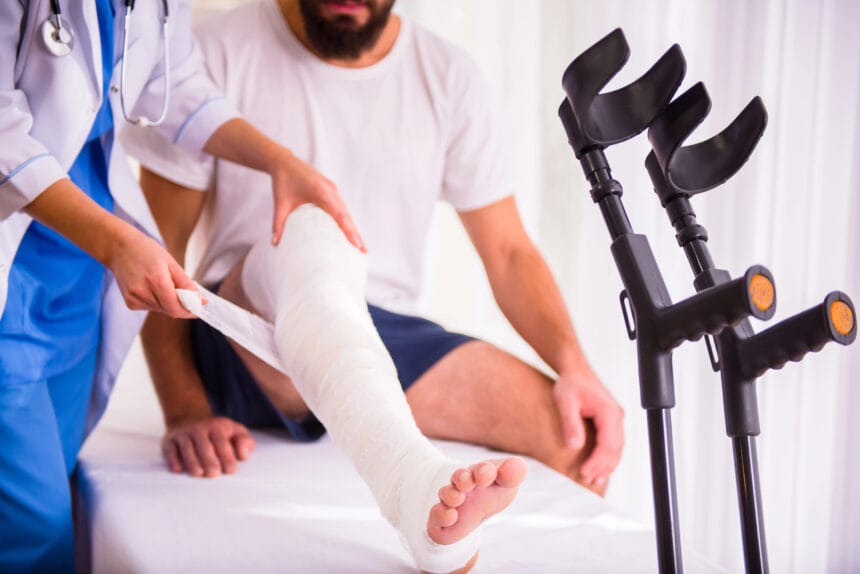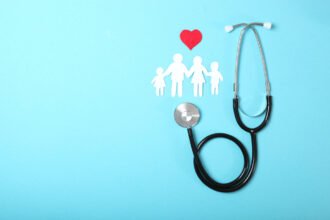When a person sustains a personal injury, whether through an accident, medical malpractice, or a workplace mishap, the journey to recovery can be daunting. The road is not just about healing from visible injuries but also about managing the long-term physical, emotional, and psychological consequences. The first phase, typically marked by immediate emergency treatment, is just the beginning. While urgent care addresses immediate concerns, a detailed treatment plan curated by healthcare professionals is vital for successful long-term recovery.
- Primary Care Providers: Your First Line of Defense
- The Specialized Care That Personal Injury Recovery Requires
- Rehabilitation: The Crucial Step Towards Full Recovery
- Pain Management and Emotional Support During Recovery
- Legal Assistance: The Intersection of Healthcare and Legal Support
- Conclusion: A Holistic Approach to Personal Injury Recovery
Personal injury victims often face unexpected and severe challenges, including limited mobility, chronic pain, or even permanent disability. These issues can alter their lifestyle significantly, making access to continuous healthcare and rehabilitation essential for recovery. Without proper healthcare interventions, victims can experience prolonged suffering and complications that might extend well beyond their physical injuries. This highlights the importance of integrating a multi-faceted healthcare approach during the recovery phase.
Primary Care Providers: Your First Line of Defense
According to the Law Office of Waks, when a personal injury occurs, your primary care physician (PCP) becomes a central figure in your recovery. Although emergency rooms and specialists are essential for immediate treatment, your PCP plays an integral role in the continued management of your health. PCPs offer long-term care, ensuring that recovery stays on track and preventing any secondary conditions that could develop due to the injury. They act as coordinators of your treatment plan, connecting you with necessary specialists and managing prescriptions, follow-ups, and rehabilitation recommendations.
Not all symptoms manifest immediately after an injury, which is why regular follow-ups with a primary care physician are essential. For example, a seemingly minor sprain or contusion could evolve into chronic pain if left unchecked. A good PCP will ensure that such issues are identified early and treated effectively. This continuity of care helps not only in healing but also in avoiding more serious, long-term consequences from the injury, ensuring that each aspect of the recovery is properly handled.
The Specialized Care That Personal Injury Recovery Requires
In many cases, personal injury victims need more than just primary care; they require specialized treatment. A victim’s injury might involve a particular area of the body, such as the spinal cord, brain, or joints, necessitating the attention of specialists. These specialists could include orthopedic surgeons, neurologists, physical therapists, and even mental health counselors, each focusing on specific recovery aspects. These experts tailor treatments based on the injury’s severity, complexity, and the individual’s health background.
For instance, a traumatic brain injury will require intervention from a neurologist or neuropsychologist, while a joint injury might need an orthopedic surgeon or a physical therapist. These specialists not only provide treatment but also monitor the injury’s progression, ensuring that recovery occurs in a structured and effective manner. Their expertise ensures that the recovery process is not one-size-fits-all but is tailored to the specific needs of the injury and the patient.
Rehabilitation: The Crucial Step Towards Full Recovery
After the initial recovery phase, rehabilitation becomes a pivotal part of the healing process. Whether the injury involved a broken limb, a torn ligament, or a head injury, rehabilitation ensures that the individual regains full functionality. Rehabilitation can involve physical therapy, occupational therapy, or even speech therapy, depending on the nature of the injury. The goal of rehabilitation is not only to heal the injury but also to help the individual return to their normal life with as few limitations as possible.
The role of physical therapy is especially important in cases involving mobility or muscle strength. Physical therapists create personalized exercises to help individuals regain strength, flexibility, and balance. Occupational therapy, on the other hand, focuses on improving daily living skills, allowing the patient to resume activities like eating, dressing, or driving. Depending on the injury, these therapeutic interventions may last from weeks to months, with the support of a dedicated healthcare team.
Pain Management and Emotional Support During Recovery
Another crucial aspect of personal injury recovery is pain management. Many personal injury victims experience ongoing pain, which can range from mild discomfort to debilitating agony. Managing pain effectively is a multi-faceted approach that may include both pharmacological and non-pharmacological methods. Pain relief medications, such as NSAIDs or prescription painkillers, can provide temporary relief, but alternative treatments like acupuncture, chiropractic care, and massage therapy are also becoming more widely accepted as part of pain management plans.
In addition to the physical pain, personal injury victims often grapple with emotional distress, depression, or anxiety related to their injury. These psychological impacts should not be overlooked, as they can affect the overall recovery process. Mental health professionals, such as therapists or counselors, can help individuals process their emotions and adjust to the challenges of living with an injury. By addressing both the physical and emotional components of recovery, individuals are better equipped to make a full recovery.
Legal Assistance: The Intersection of Healthcare and Legal Support
While healthcare is critical for recovery, victims of personal injury also need to navigate the legal landscape. Legal experts specializing in personal injury law can help ensure that victims are properly compensated for their injuries, lost wages, medical expenses, and emotional distress. Often, healthcare providers and legal professionals work in tandem, with doctors providing medical records that document the extent of the injury, while lawyers help pursue claims to secure the necessary compensation.
This collaboration between healthcare and legal professionals ensures that victims of personal injury not only receive the best possible medical care but also the financial support needed to cover their expenses and make up for lost income. Personal injury lawsuits can be complex, but with the right healthcare and legal teams, victims can secure a more comprehensive recovery package. Whether through settlement negotiations or court cases, these professionals help relieve the financial burden that often accompanies personal injury recovery.
Conclusion: A Holistic Approach to Personal Injury Recovery
Recovery from a personal injury is rarely straightforward and requires much more than just medical treatment. It requires an integrated approach that combines primary care, specialized treatment, rehabilitation, pain management, emotional support, and legal assistance. By working closely with a range of healthcare providers and legal experts, victims of personal injury can ensure that their recovery is as smooth and effective as possible.
Understanding the critical role of healthcare in the recovery process is essential for those who have suffered injuries. From the initial treatment phase to long-term rehabilitation and support, each step plays a significant role in regaining health and functionality. Furthermore, understanding the importance of legal support ensures that the financial aspects of recovery are addressed. With the right medical care and legal guidance, victims can make a full recovery, regaining not just their physical health but their overall well-being.










